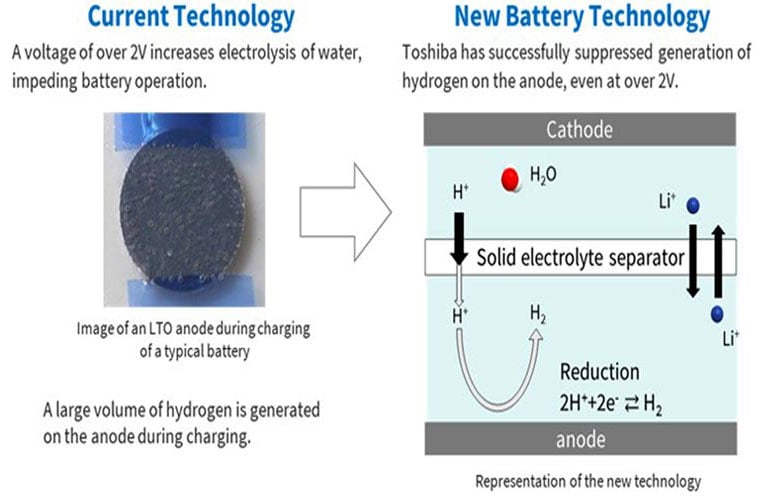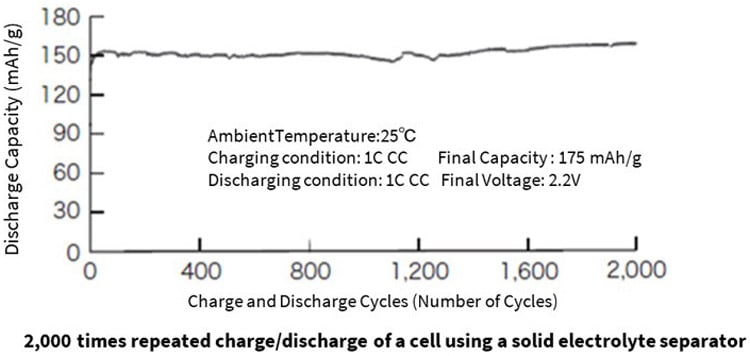
Toshiba has developed a prototype for a new type of rechargeable lithium-ion battery that uses water as the aqueous electrolyte. This new battery does not have any flammable organic solvents allowing it to operate at low temperatures of even -30°C and demonstrate a low risk over long term usage, even in the event of a fire. It also delivers high durability of 2,000 charge and discharge cycles, making it possible to be used in many large-capacity energy storage applications.
The energy that can be obtained from renewable energy sources like the sun and wind fluctuates with the time of the day, weather, season, and location. If we were to achieve a stable power supply from these renewable energy sources, we need large-scale stationary batteries that can store this energy when available and source it during demand. These large-scale batteries are normally lithium-ion rechargeable batteries (LIB) with high energy density; however, the downside of these LIB batteries is that they use flammable organic solvents to achieve high energy density. This is a major safety concern and hence these large-scale storage batteries are not allowed to be used in applications where high-level safety is required.
The previous SCiB batteries from Toshiba had improved safety performance by replacing the usual graphite anode with a nonflammable lithium titanate oxide (LTO). Now, the company has further boosted safety by developing a battery that uses an aqueous electrolyte. While the LTO secures the battery against shock and vibration, the aqueous electrolyte ensures safety in the event of a fire at the installation location. This advance both simplifies the safety measures necessary during installation and broadens the scope of locations where systems can be installed. It is now possible to consider installation near residential areas and inside office buildings, a factor that will contribute to the more widespread use of large-scale storage batteries.
The problem with aqueous batteries until now has been that, with time, electrolysis of aqueous electrolyte degrades battery and cycle performance. Toshiba has overcome this with a new battery structure that combines a solid electrolyte separator and an electrolyte with a high concentration of lithium salt. This approach prevents hydrogen ions (water molecules) migrating from the cathode to the anode, suppressing the electrolysis as shown in the main image. It has enhanced performance by increasing the number of charge and discharge cycles to over 2,000, 10 times higher than is possible with current technology, while also achieving a voltage of 2.4V, high for an aqueous battery.

The new battery adopts an aqueous electrolyte that does not freeze at low temperatures, which realizes charge and discharge at a temperature as low as -30° C. Another plus is that the aqueous electrolyte not only improves operational safety but is also expected to reduce costs by simplifying manufacturing facilities. Toshiba will further advance research and development of the aqueous battery, aiming to provide samples at an early date.

